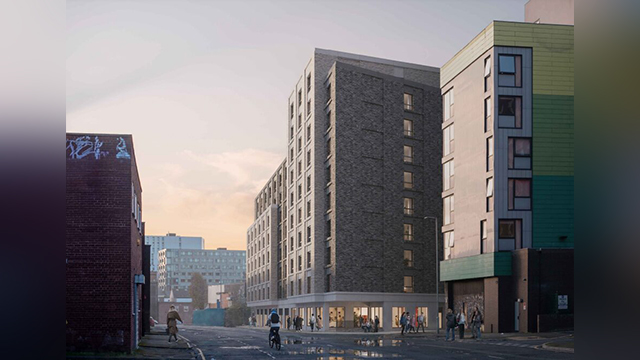Grant of exclusive use of one-half of garden area – Parties constructing dividing fence – Title to grantee’s house subsequently recording right to such exclusive use – Defendant successor to grantor – Defendant removing fence and treating entire area as his own – Claimant successor to grantee – Whether claimant entitled to sue in trespass – Right of way – Defendant altering approach to private road – Claimant unable to leave car in front of house – Whether defendant interfering with claimant’s right to “use” road
A 15 yd private road formed a cul-de-sac separating a terrace of three houses, nos 102-104, from a rectangular area that was laid out as a garden (the garden area). The claimant’s house, no 102, stood at the western end of the road, where it joined the highway. The defendant’s house (no 104) fronted the closed eastern end of the road. Under a conveyance executed in 1918, the right to use the garden area was exclusive to no 104. However, at some time thereafter, it came to be accepted that the owners of no 102 could also make use of that area.
In 1955 the owners of the two properties executed a deed, expressed to be for the purpose of “more conveniently using the said garden”, that provided that the garden area would be divided by a wire fence (subsequently erected) so that the eastern and western halves would be for the exclusive use of the owners of no 104 and no 102 respectively.
The titles to the two houses were first registered in the early 1980s. The entry for no 102 referred to the house “together with the exclusive use of” the western half of the garden area as shown on the filed plan. A similar entry for no 104 referred to a plan showing the eastern half.
By 1998 the garden area was in a badly neglected state. The defendant concluded that the value of no 104 would be much enhanced if the garden area were redesigned and certain improvements were carried out to the private road. No objection was taken by the owner of no 103, who had no rights over the garden area. Disregarding protests from the claimant, the defendant removed the dividing fence, relaid the lawn, constructed raised flower beds, reshaped one of the borders and installed a brick and stone “water feature” on the former dividing line. Works to the road included the erection of two brick columns at the junction with the highway and the hanging from those columns of two electrically-operated wrought-iron gates. The columns were so placed that the claimant could no longer park his car in front of his house for fear that it would be damaged by the gates.
The claimant brought proceedings in the county court, claiming trespass to his side of the garden area and wrongful interference with his right to use the road. The judge made a number of non-final orders in the claimant’s favour. The defendant appealed to the High Court*, where it contended, inter alia, that the claimant did not have: (i) sufficient title to sue for trespass; (ii) any right to keep his car on the road in front of his house.
Held: The appeal was dismissed.
1. The claimant had rightly contended that the grant of exclusive or unrestricted use of a piece of land operates to pass the property or ownership, such right being too extensive to amount to an easement: see Reilly v Booth (1890) 44 ChD 12, as cited in Ruoff and Roper on Registered Conveyancing para 12-35. It was no answer to say that the 1955 deed created no more than a licence, as it was now established that a licensee could maintain trespass against an interloper provided he was given effective control over the land: see Manchester Airport plc v Dutton [1999] 1 EGLR 147 and Pemberton v Southwark London Borough Council [2000] 2 EGLR 33, as explained and distinguished in Countryside Residential (North Thames) Ltd v Tugwell [2000] 2 EGLR 59. Nor could it be said that, as a matter of construction, the 1955 deed gave no more than a personal right to the owner of no 102 at the time. Even if that argument were correct, it would require the defendant to apply for rectification of the register.
2. The relevant register entry recorded that no 102 had the benefit of “the use in common with all other persons [so entitled] of the said Private Road delineated on the plan. . . “. There was no authority for the defendant’s contention that the claimant had no more than a right to pass and repass (parking being limited to collections and deliveries): see Gale on Easements (16th ed) para 9-66, explaining that a right to “use” a way entitled the grantee to use it for all purposes by which the property adjoining the street would normally be accommodated, provided that such use did not interfere unreasonably with the lawful use by others.
*Editor’s note: Under the new rules of procedure, an appeal from a non-final order lies to the High Court.
Sara Hargreaves (instructed by Dean Wilson Laing, of Brighton) appeared for the claimant; Kenneth Munro (instructed by Martin Cray & Co, of Brighton) appeared for the defendant.
Alan Cooklin, barrister







